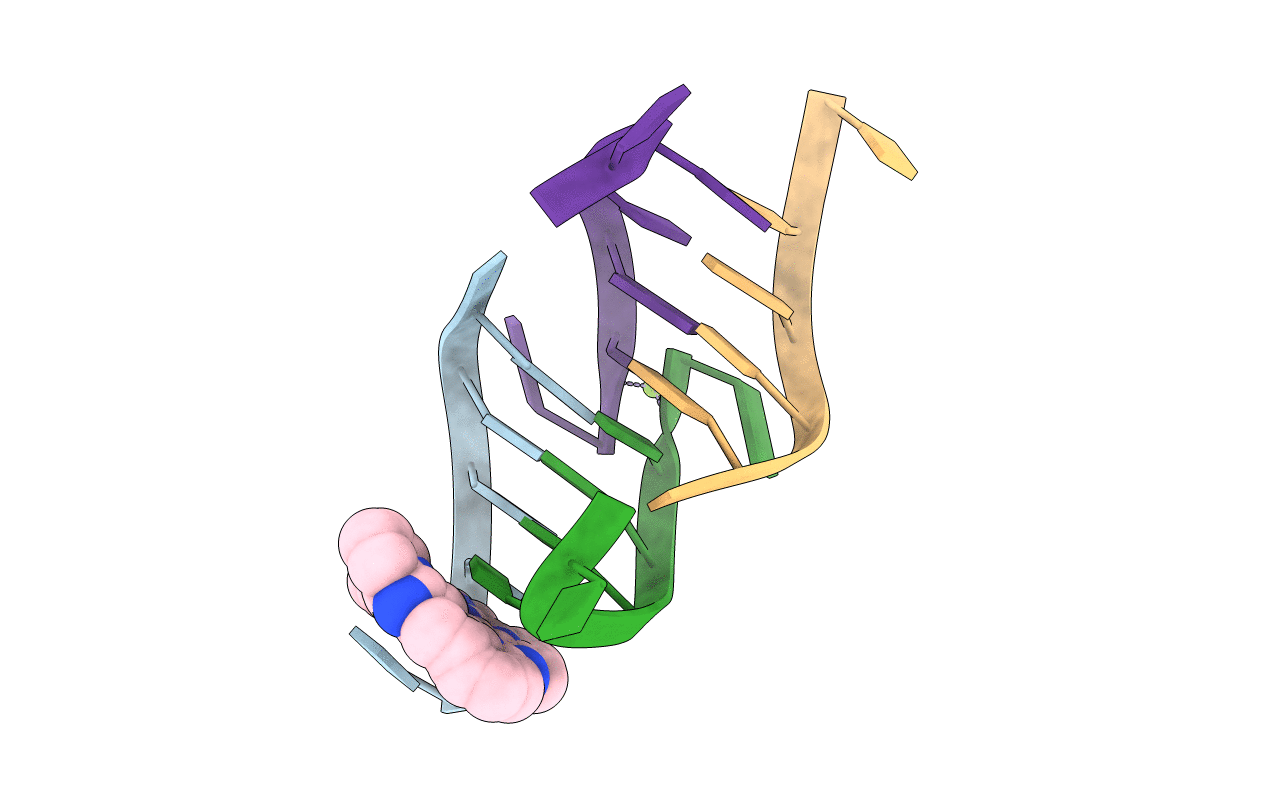
Deposition Date
2017-11-28
Release Date
2019-05-29
Last Version Date
2024-01-17
Entry Detail
PDB ID:
6F3C
Keywords:
Title:
The cytotoxic [Pt(H2bapbpy)] platinum complex interacting with the CGTACG hexamer
Biological Source:
Source Organism:
synthetic construct (Taxon ID: 32630)
Method Details:
Experimental Method:
Resolution:
2.30 Å
R-Value Free:
0.29
R-Value Work:
0.25
R-Value Observed:
0.26
Space Group:
P 32 2 1


